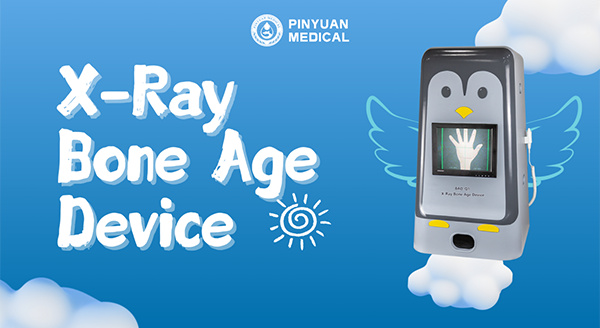The difference between bone age and actual age (being larger or smaller) does not have an absolute “good” or “bad” distinction. Its clinical significance needs to be comprehensively judged in combination with specific age, gender, growth rate and development stage. The following is the specific analysis:
I. The Relationship between Bone Age and Actual Age
Bone age is an indicator for assessing the maturity of bone development and reflects biological age. Under normal circumstances, a difference of ±1 year between bone age and actual age is considered a reasonable range. If the difference exceeds two years, it may indicate abnormal growth and development.
Ⅱ. The Impact of advanced bone age
1. Potential risks
Risk of precocious puberty: Advanced bone age may be accompanied by precocious puberty, leading to premature closure of the growth plate and impaired adult height.
Case: If a girl is 8 years old but her bone age has reached 10, she may enter puberty earlier and her growth space may be shortened.
Metabolic issues: Rapid bone age may be associated with obesity and insulin resistance, increasing the risk of cardiovascular diseases.
Psychological impact: Precocious children may develop low self-esteem or social disorders due to differences in body shape.
2. Situations that require vigilance
The bone age increases by more than one year each year, and the growth rate of height does not accelerate simultaneously.
Accompanied by the early appearance of secondary sexual characteristics.
Ⅲ. The Impact of Younger bone Age
1. Potential risks
Growth retardation: Delayed bone age may indicate growth hormone deficiency, hypothyroidism or chronic diseases.
Case: If a 10-year-old boy has a bone age of only 8 years old and his annual height increase is less than 5cm, the cause of the disease needs to be investigated.
Delayed puberty: A significant delay in bone age may lead to a delayed onset of puberty, affecting final height.
2. Situations that require vigilance
The bone age increases by less than 0.5 years each year, and the height has long been at a low level among peers.
Accompanied by other symptoms (such as fatigue, loss of appetite, constipation, etc.).
Ⅳ. Strategies for Dealing with Bone Age Deviation in Different Age Groups
1.Childhood (4-12 years old)
Advanced bone age
Intervention focus: Delay the progression of bone age and strive for growth time.
If accompanied by precocious puberty, drugs can be used to inhibit sexual development.
If the bone age is advanced due to obesity, it is necessary to strengthen exercise and dietary management.
Relatively young bone age
Intervention focus: Promote growth and identify the cause of the disease.
If there is a deficiency of growth hormone, growth hormone therapy can be considered.
If hypothyroidism occurs, thyroid hormones need to be supplemented.
2. Adolescence (12-18 years old)
Advanced bone age
If the epiphysis has not yet closed, the final height can be improved by inhibiting the progression of bone age in combination with growth hormone therapy.
If the epiphysis is close to closing, the intervention effect is limited and psychological support should be paid attention to.
Relatively young bone age
If the growth rate is acceptable, there may still be growth potential and regular monitoring is required.
If puberty is significantly delayed, the cause should be investigated and hormone therapy considered.
V. Key Monitoring and Comprehensive Evaluation
Regular monitoring
For ages 4 to 12: Test once a year (pay attention to growth trends).
Adolescence: Test once every six months (dynamically adjust the intervention plan).
Comprehensive assessment
Bone age should be comprehensively judged by taking into account the percentile of height, growth rate, and the height inherited from parents. For example:
If a child’s height is above average among their peers and their bone age is slightly older, intervention may not be necessary.
If the height is below the 3rd percentile, even if the bone age is normal, the cause of the disease still needs to be investigated.
Vi. Common Misunderstandings of Parents
Misconception 1: “Young bone age = late growth, no need to worry
The truth is that if bone age is delayed accompanied by growth retardation, it may be a disease signal and medical attention should be sought promptly.
Misconception 2: “Large bone age = no height growth, give up treatment.”
The truth is that adult height can still be improved by inhibiting bone age progression and promoting growth.
The difference between bone age and actual age needs to be observed dynamically rather than judged at a single time point. It is recommended that parents pay attention to their children’s growth curves. If any abnormal height growth is found (such as an annual increase of less than 5cm or more than 7cm), they should promptly take their children to the pediatric endocrinology department for bone age assessment and cause screening. Early intervention can significantly improve final height and developmental quality.
Post time: Jul-01-2025


